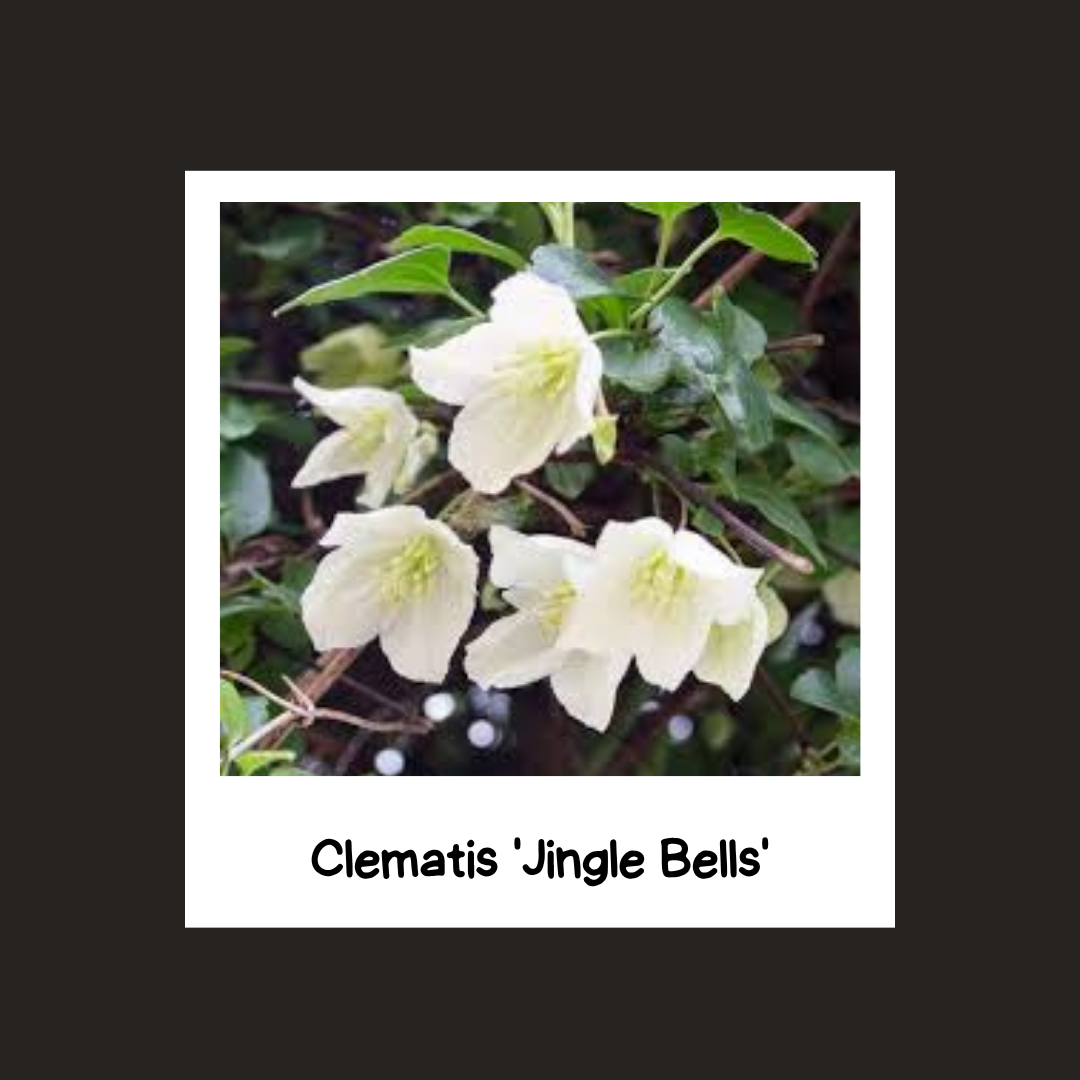The Clematis cirrhosa ‘Jingle Bells’ is a popular winter-flowering climber, valued for its ability to provide colour and interest during the coldest months of the year. This guide provides a detailed overview of the plant, including its characteristics, seasonal appeal, and considerations for gardeners.
What is Clematis cirrhosa ‘Jingle Bells’?
Clematis ‘Jingle Bells’ is an evergreen climber belonging to the Ranunculaceae family. It is a cultivar of Clematis cirrhosa, a species native to the Mediterranean region. This particular variety is known for its profuse and fragrant bell-shaped flowers that appear in winter.
The plant features glossy, dark green, trifoliate leaves that provide a lush backdrop for its winter blooms. The foliage can sometimes take on a bronze tint in colder weather, adding another layer of visual interest. It is a vigorous climber, capable of reaching heights of up to 4 metres (approximately 13 feet) and a spread of 1.5 metres (5 feet).
Seasonal Interest
The primary appeal of ‘Jingle Bells’ is its winter flowering period. From December to February, the plant produces an abundance of creamy-white, nodding, bell-shaped flowers. Each flower is approximately 4-6 cm in diameter and has a subtle, citrus-like fragrance, which is more noticeable on mild winter days.
Following the flowering period, the plant develops attractive, silky seed heads, often described as looking like ‘old man’s beard’. These fluffy, silver-white structures persist on the vine well into the spring and summer, extending the plant’s ornamental value beyond its flowering season. During the summer, it is not uncommon for the plant to enter a dormant phase, where it may shed some of its leaves, particularly in hotter, drier climates. This is a natural survival mechanism, and the foliage typically returns as temperatures cool in the autumn.
Benefits for the Garden
There are several advantages to including Clematis cirrhosa ‘Jingle Bells’ in a garden design.
- Winter Interest: Its ability to bloom prolifically in winter makes it an invaluable addition to gardens that can otherwise look bare. The cheerful, white flowers stand out against the sparse winter landscape.
- Evergreen Foliage: The plant’s evergreen nature ensures year-round structure and coverage, making it ideal for screening unsightly features like fences or sheds.
- Wildlife Support: The early flowers provide a much-needed source of nectar for pollinators, such as brave winter bees, that may be active during milder winter spells. The dense foliage also offers shelter for birds and insects.
- Low Maintenance: Once established, ‘Jingle Bells’ is relatively low-maintenance. It does not require the complex pruning regimes associated with other clematis groups.
Disadvantages and Considerations
While ‘Jingle Bells’ is a rewarding plant, there are some factors to consider.
- Vigorous Growth: Its vigorous nature means it can quickly outgrow a small space. It requires a sturdy support structure, such as a large trellis, wall, or pergola, to climb. Regular monitoring is needed to prevent it from overwhelming neighbouring plants.
- Summer Dormancy: The potential for leaf drop during summer can be a drawback for gardeners seeking consistent, lush foliage throughout the year. Planting it amongst other climbers or shrubs can help mask any temporary sparseness.
- Pruning Group 1: As it flowers on the previous year’s growth, it falls into Pruning Group 1. This means it requires minimal pruning. Any necessary trimming to control its size or remove dead stems should be done immediately after flowering in late winter or early spring. Pruning at other times of the year will remove the wood that carries the next winter’s flowers.
History and Origin
Clematis cirrhosa, the parent species of ‘Jingle Bells’, has been cultivated for centuries. Native to Southern Europe, North Africa, and the Balearic Islands, it was first described by Carl Linnaeus in 1753. The species name cirrhosa comes from the Latin ‘cirrus’, meaning a tendril, referring to the plant’s clasping leaf stalks that help it climb.
The specific cultivar ‘Jingle Bells’ was introduced to horticulture more recently. It was bred to enhance the desirable traits of the species, specifically for a more prolific flowering display and cleaner white petals. It is a sterile cultivar, which means it does not produce viable seeds, although it does form the ornamental seed heads. This sterility contributes to its extended and abundant flowering period, as the plant directs its energy into producing blooms rather than seeds.
There is no significant folklore specifically associated with the ‘Jingle Bells’ cultivar. However, in the broader Victorian ‘Language of Flowers’, Clematis symbolised mental beauty and ingenuity, likely due to its clever climbing habit.
A Winter Jewel for Your Garden
Clematis cirrhosa ‘Jingle Bells’ is an exceptional plant for any gardener looking to bring life and elegance to the winter garden. Its combination of fragrant, bell-shaped flowers, evergreen foliage and interesting seed heads provides a multi-seasonal display with minimal effort. While its vigorous growth requires consideration, its ability to transform a dormant garden into a vibrant space makes it a highly recommended choice. By providing it with a suitable location and a strong support, you can enjoy its cheerful winter performance for years to come.
Further Reading: Snowdrops the symbol of Hope and Resilience, The Enchanting World of the Winter Aconite
